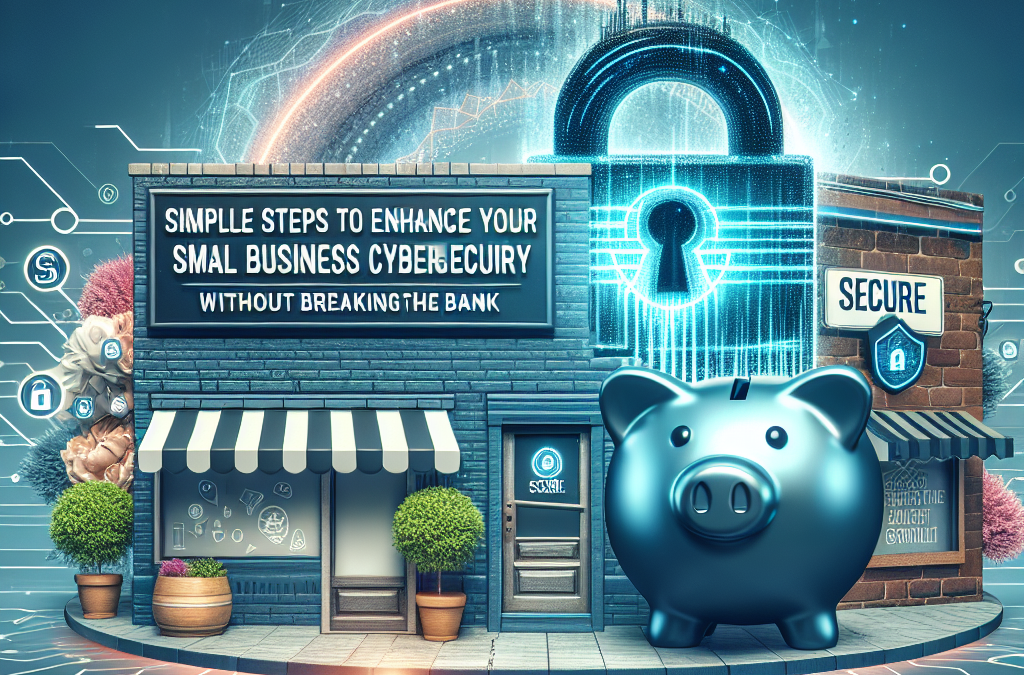
The Human Factor: Training Your Team to Spot Cyber Threats
May 28, 2025
Beyond Passwords: Essential Tools for Small Business Cyber Defense
May 28, 2025
In an increasingly digital world, small businesses are becoming prime targets for cyberattacks. However, many entrepreneurs often believe that robust cybersecurity measures are only feasible for larger companies with hefty budgets. The good news is that there are effective ways to bolster your small business’s cybersecurity without incurring significant costs. Here are some simple, actionable steps you can take to enhance your cyber defenses.
1. Educate Your Employees
Your employees are your first line of defense against cyber threats. Conducting regular cybersecurity training can significantly reduce the chances of falling victim to phishing attacks and other common threats. Simple measures such as recognizing suspicious emails, understanding the importance of secure passwords, and being cautious with sensitive data can make a huge difference.
Cost-Effective Solution:
Utilize free online resources and courses provided by organizations like the Cybersecurity & Infrastructure Security Agency (CISA) to provide training for your team.
2. Implement Strong Password Policies
A weak or easily guessable password can expose your business to cyberattacks. Encourage employees to create strong, unique passwords and implement a policy for regularly updating them. Using a password manager can help manage these passwords securely.
Cost-Effective Solution:
Free password management tools like Bitwarden or LastPass can help your team create and store strong, complex passwords without breaking the bank.
3. Keep Software up to Date
Regularly updating your software, including operating systems, applications, and antivirus programs, is essential for cybersecurity. Software updates often include patches for security vulnerabilities that cybercriminals may exploit.
Cost-Effective Solution:
Enable automatic updates on all devices and software when possible, reducing the manual effort and ensuring you always have the latest security features.
4. Use Two-Factor Authentication (2FA)
Implementing two-factor authentication adds an extra layer of security by requiring users to provide two forms of identification before accessing accounts. This can significantly reduce unauthorized access even if a password is compromised.
Cost-Effective Solution:
Many platforms offer free 2FA options. Ensure that all services you use (email, banking, etc.) have 2FA enabled.
5. Backup Data Regularly
Data loss can be devastating for a small business, whether due to ransomware, hardware failure, or accidental deletion. Regular backups can ensure that your data remains safe and quickly accessible when needed.
Cost-Effective Solution:
Utilize free or low-cost cloud storage services for regular backups, such as Google Drive or Dropbox, and ensure you have offline backups for sensitive data.
6. Limit Access to Sensitive Information
Not everyone in your organization needs access to all data. Implementing role-based access control means employees can only access the information necessary for their jobs, minimizing the risk of internal breaches.
Cost-Effective Solution:
Establish a clear policy on data access and routinely review who has access to what. Adjust permissions as roles change or employees leave.
7. Develop an Incident Response Plan
Having a plan in place for when a cybersecurity incident occurs can dramatically reduce damage and recovery time. Outline steps to take in case of a breach, including communication strategies, containment, and recovery measures.
Cost-Effective Solution:
Draft a simple plan that includes roles and responsibilities, and make sure all employees are aware of the procedures. This can be done using templates available online at little to no cost.
8. Utilize Free Security Tools
Many effective security tools can boost your cybersecurity posture without costing a dime. Firewalls, antivirus software, and network security tools are often available for free or at a minimal cost.
Cost-Effective Solution:
Explore free security software options, such as Avast or AVG for antivirus protection, and configure basic firewall settings on your network and devices.
Conclusion
Enhancing your small business’s cybersecurity doesn’t have to be an expensive endeavor. By implementing these simple, cost-effective strategies, you can create a robust defense against cyber threats. Remember, the key to cybersecurity is not just about technology; it’s about fostering a culture of security within your organization. By prioritizing cybersecurity awareness and practices, you create a more resilient and secure business environment. Cyber threats are constantly evolving, but with proactive measures, you can safeguard your business for the future.







